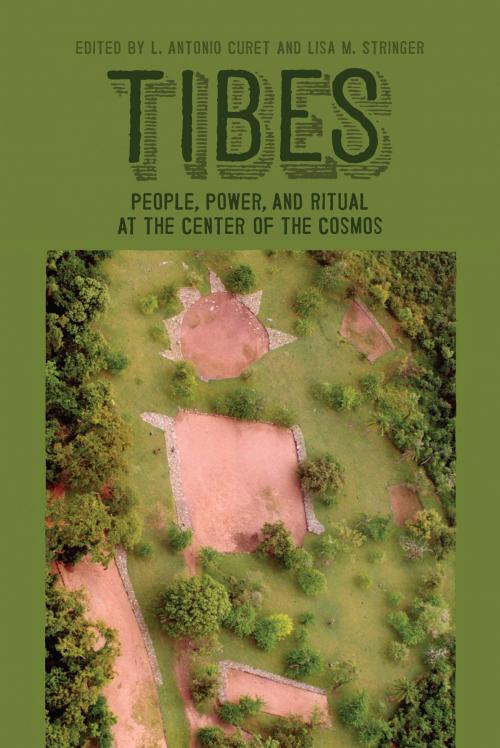Tibes
People, Power, and Ritual at the Center of the Cosmos
Nonfiction, History, Americas, Caribbean & West Indies, Social & Cultural Studies, Social Science, Archaeology| Author: | Edwin Crespo-Torres, Lisa M. Stringer, L. Antonio Curet, Andrew Castor, Jeffrey B. Walker, Susan D. deFrance, Pedro Alvarado Zayas, Lee A. Newsom, Joshua M. Torres, Geoffrey DuChemin, Michelle J. LeFebvre, William J. Pestle, Carla S. Hadden, Jeffry D. Grigsby, Daniel Welch, Scott Rice-Snow, Melissa J. Castor, Richard H. Fluegeman | ISBN: | 9780817382520 |
| Publisher: | University of Alabama Press | Publication: | December 27, 2009 |
| Imprint: | University Alabama Press | Language: | English |
| Author: | Edwin Crespo-Torres, Lisa M. Stringer, L. Antonio Curet, Andrew Castor, Jeffrey B. Walker, Susan D. deFrance, Pedro Alvarado Zayas, Lee A. Newsom, Joshua M. Torres, Geoffrey DuChemin, Michelle J. LeFebvre, William J. Pestle, Carla S. Hadden, Jeffry D. Grigsby, Daniel Welch, Scott Rice-Snow, Melissa J. Castor, Richard H. Fluegeman |
| ISBN: | 9780817382520 |
| Publisher: | University of Alabama Press |
| Publication: | December 27, 2009 |
| Imprint: | University Alabama Press |
| Language: | English |
The first comprehensive analysis of a strategically located ceremonial center on the island of Puerto Rico.
The prehistoric civic-ceremonial center of Tibes is located on the southern coast of Puerto Rico, just north of the modern coastal city of Ponce. Protected on two sides by a river, and on the other two sides by hills, this approximately 10.5-acre site remains as fertile and productive today as when first occupied over 2,000 years ago. Such a rich region would have been a choice location for native peoples because of the diversity in all resources, from land, air, and sea--and also symbolically crucial as a liminal space within the landscape. It may have been regarded as a space charged with numen or cosmic energy where different parts of the cosmos (natural vs. supernatural, or world of the living vs. world of the dead) overlap. Archaeological evidence reveals a long occupation, about 1,000 years, possibly followed by an extensive period of sporadic ceremonial use after the site itself was practically abandoned.
In this volume, nineteen Caribbeanists, across a wide academic spectrum, examine the geophysical, paleoethnobotanical, faunal, lithics, base rock, osteology, bone chemistry and nutrition, social landscape, and ceremonial constructs employed at Tibes. These scholars provide a concise, well-presented, comprehensive analysis of the evidence for local level changes in household economy, internal organization, accessibility to economic, religious, and symbolic resources related to the development and internal operation of socially stratified societies in the Caribbean.
The first comprehensive analysis of a strategically located ceremonial center on the island of Puerto Rico.
The prehistoric civic-ceremonial center of Tibes is located on the southern coast of Puerto Rico, just north of the modern coastal city of Ponce. Protected on two sides by a river, and on the other two sides by hills, this approximately 10.5-acre site remains as fertile and productive today as when first occupied over 2,000 years ago. Such a rich region would have been a choice location for native peoples because of the diversity in all resources, from land, air, and sea--and also symbolically crucial as a liminal space within the landscape. It may have been regarded as a space charged with numen or cosmic energy where different parts of the cosmos (natural vs. supernatural, or world of the living vs. world of the dead) overlap. Archaeological evidence reveals a long occupation, about 1,000 years, possibly followed by an extensive period of sporadic ceremonial use after the site itself was practically abandoned.
In this volume, nineteen Caribbeanists, across a wide academic spectrum, examine the geophysical, paleoethnobotanical, faunal, lithics, base rock, osteology, bone chemistry and nutrition, social landscape, and ceremonial constructs employed at Tibes. These scholars provide a concise, well-presented, comprehensive analysis of the evidence for local level changes in household economy, internal organization, accessibility to economic, religious, and symbolic resources related to the development and internal operation of socially stratified societies in the Caribbean.















